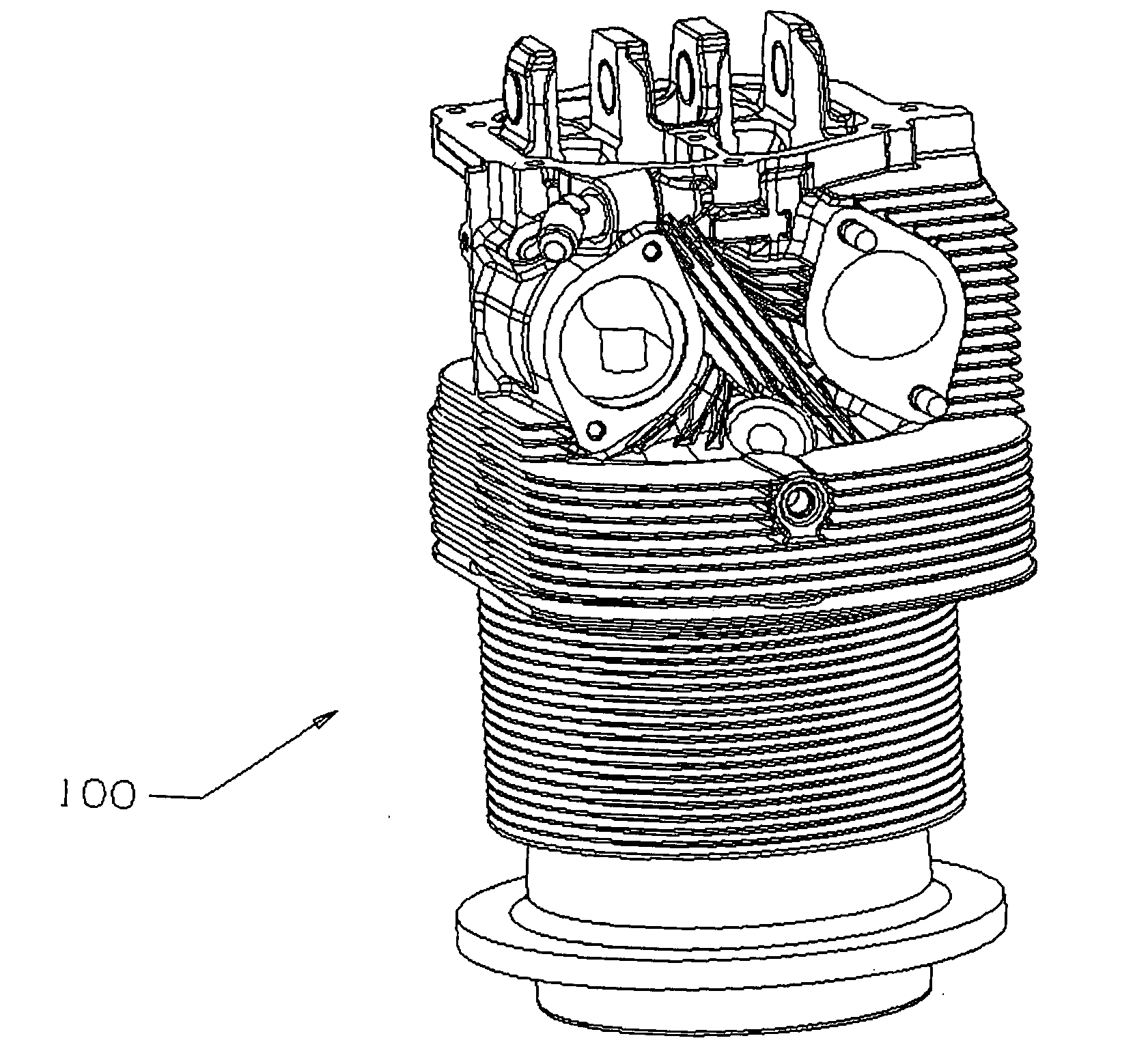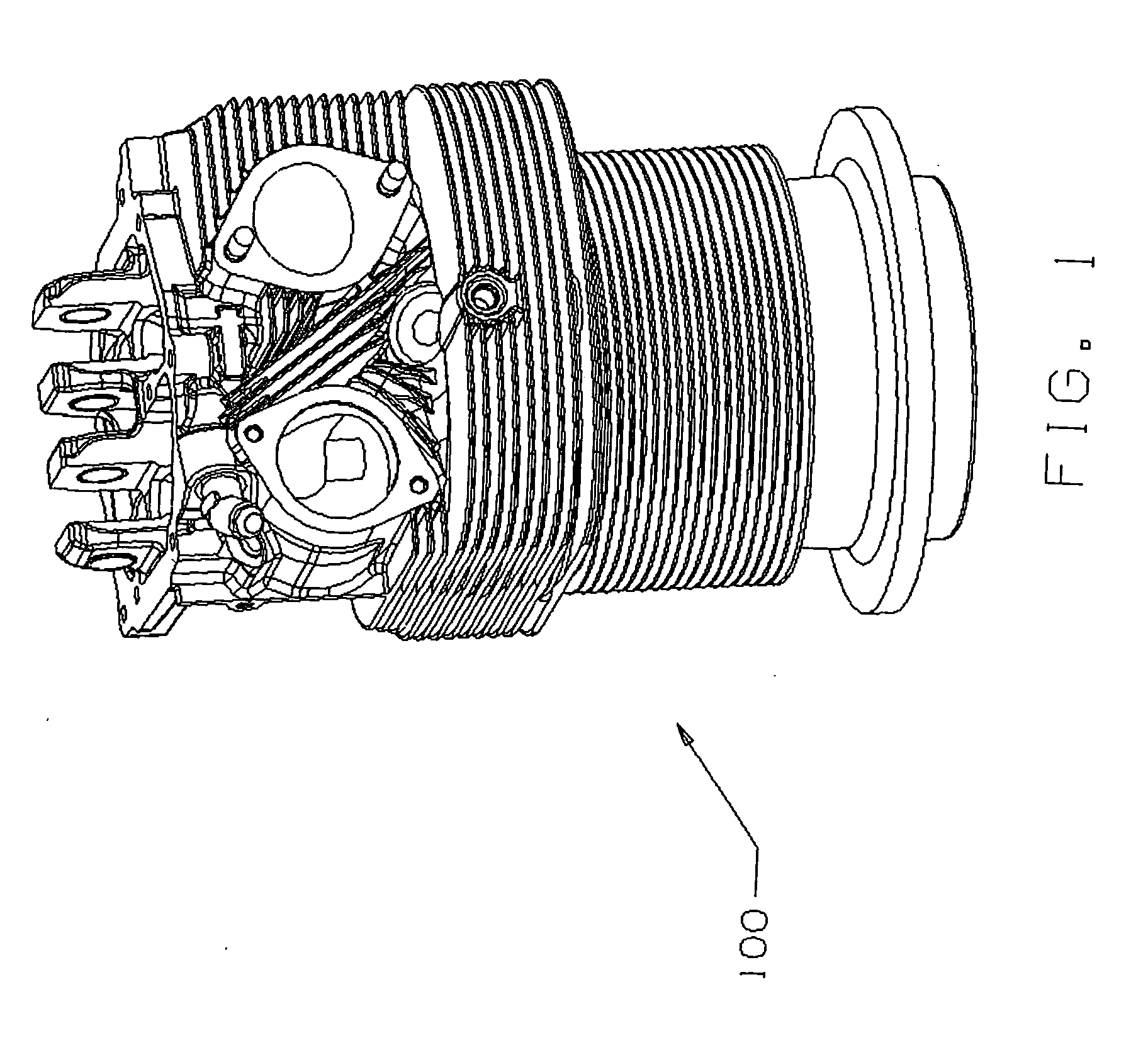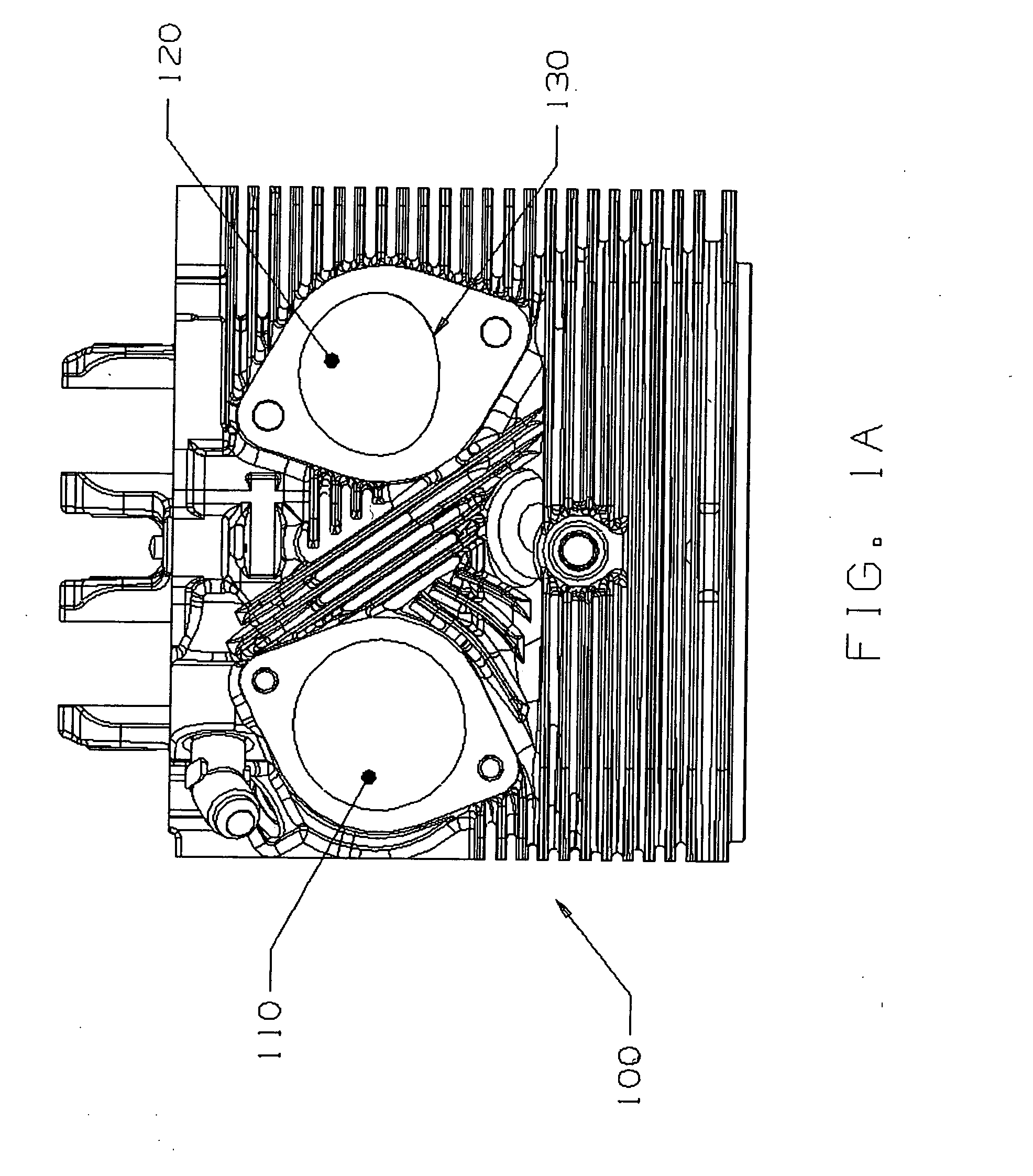Cylinder head assemblies
a technology of cylinder head and assembly, which is applied in the direction of cylinders, combustion engines, machines/engines, etc., can solve the problems of increasing the likelihood of engine knock, reducing the efficiency of overall engine performance, so as to improve the efficiency or horsepower of spark-ignited internal combustion engines, improve the efficiency or horsepower, and increase the efficiency of internal combustion engines.
- Summary
- Abstract
- Description
- Claims
- Application Information
AI Technical Summary
Benefits of technology
Problems solved by technology
Method used
Image
Examples
second embodiment
[0041] The present invention provides embodiments directed to improved cylinder head assemblies and associated methods. A first embodiment provides a new cylinder head assembly for an internal combustion engine. A second embodiment provides an overhaul kit for retrofitting an existing cylinder head assembly with the configurations of the present invention. A third embodiment provides a method of making an improved cylinder head assembly. The new cylinder head assembly and the overhaul kit of the present invention provide a spark-ignited internal combustion engine with greater fuel efficiency, reduced fuel octane requirement, and / or horsepower due to the combination of the following features.
[0042] Referring to FIG. 1, a cylinder head 100 having the improved features of the present invention is shown. The features include, but are not limited to, an improved squish area, relocated spark plugs, and improved intake and exhaust flow.
[0043] Referring to FIG. 1a, an exploded view of the ...
PUM
 Login to View More
Login to View More Abstract
Description
Claims
Application Information
 Login to View More
Login to View More - R&D
- Intellectual Property
- Life Sciences
- Materials
- Tech Scout
- Unparalleled Data Quality
- Higher Quality Content
- 60% Fewer Hallucinations
Browse by: Latest US Patents, China's latest patents, Technical Efficacy Thesaurus, Application Domain, Technology Topic, Popular Technical Reports.
© 2025 PatSnap. All rights reserved.Legal|Privacy policy|Modern Slavery Act Transparency Statement|Sitemap|About US| Contact US: help@patsnap.com



